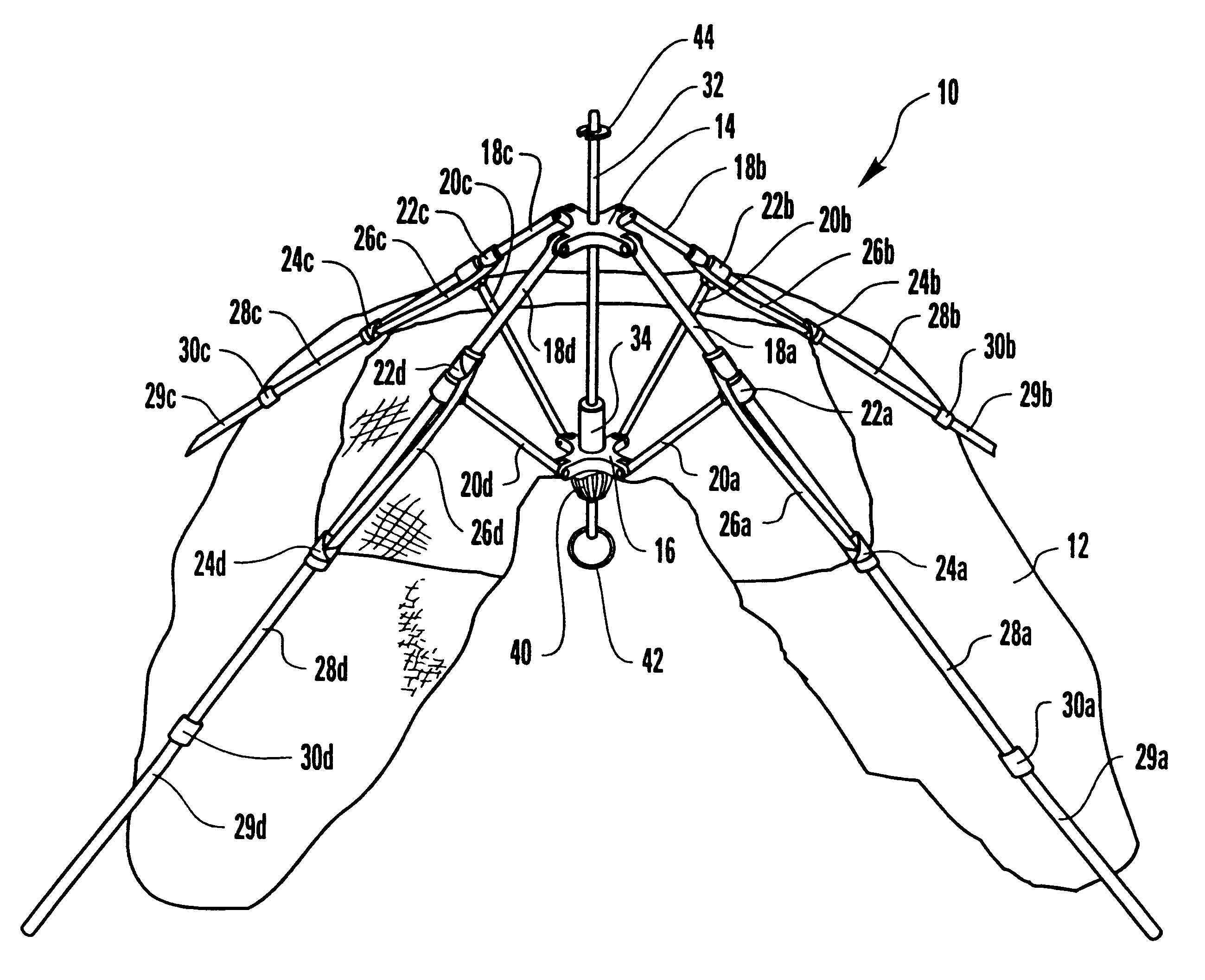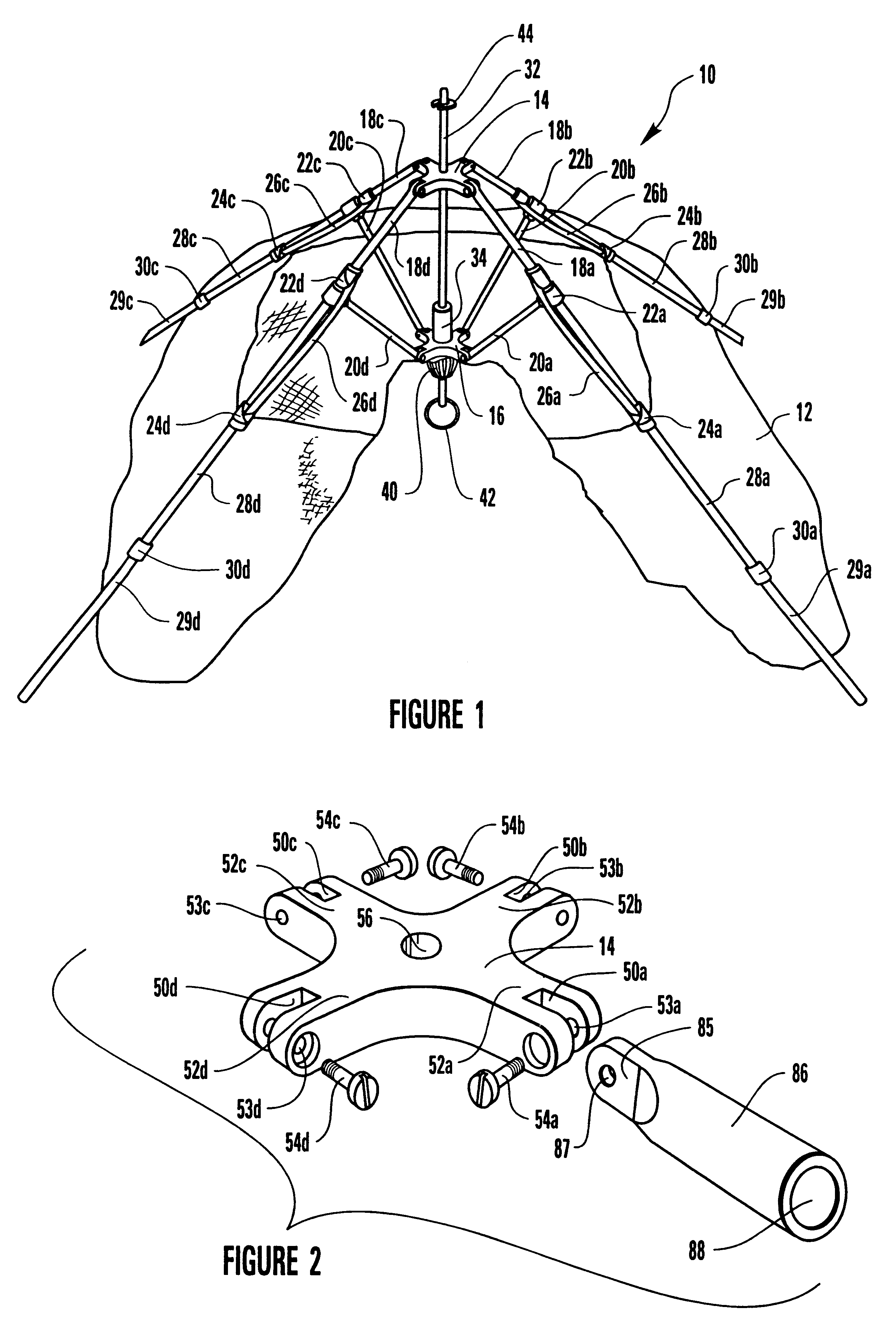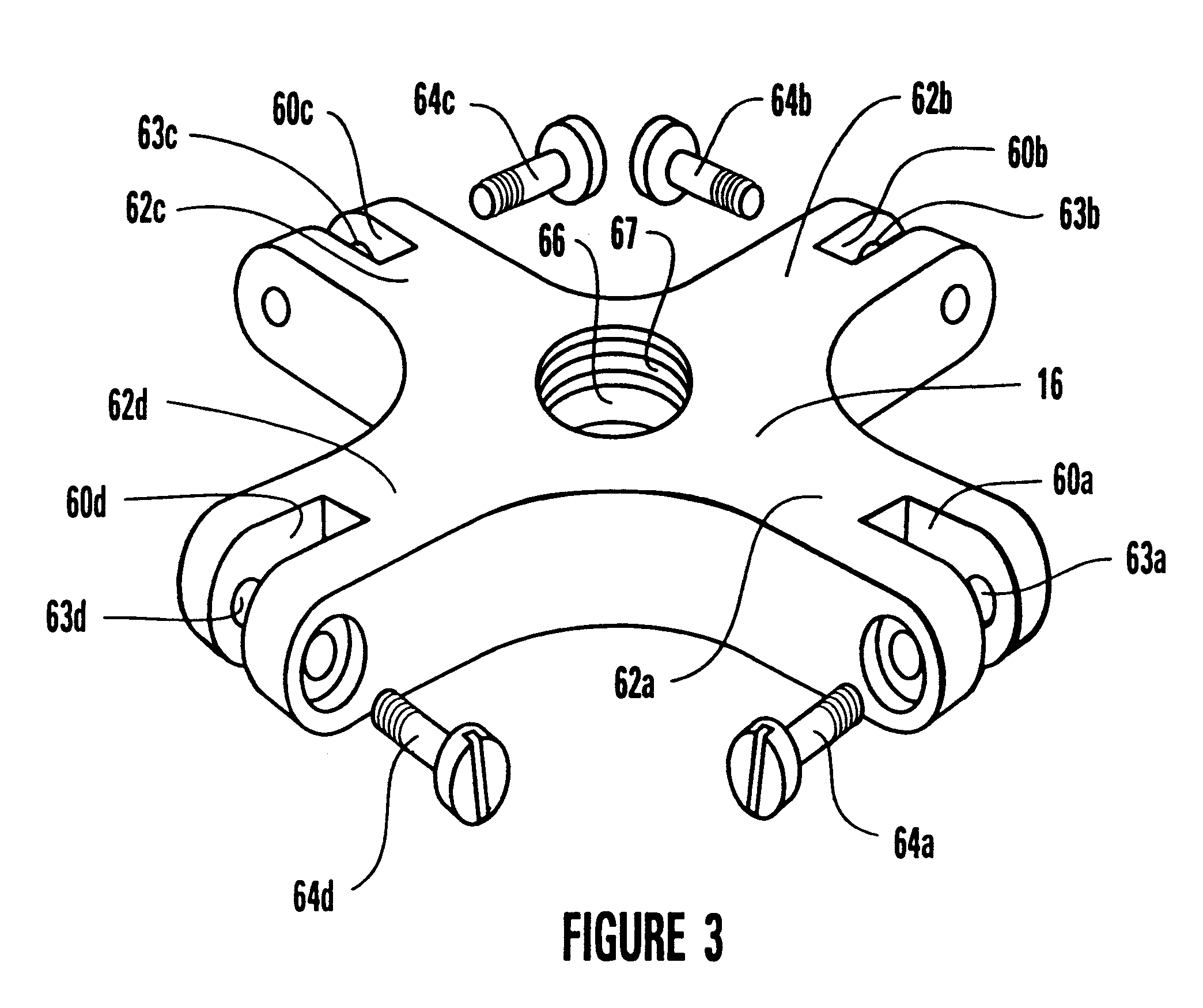Umbrella-type tent apparatus and method
- Summary
- Abstract
- Description
- Claims
- Application Information
AI Technical Summary
Benefits of technology
Problems solved by technology
Method used
Image
Examples
Embodiment Construction
Referring now to FIG. 1, the improvements to the umbrella-type tent apparatus are shown generally at 10 as my novel support framework and are shown in the environment of a fabric tent shell 12, only a portion of which is shown herein for ease of presentation. Support framework 10 includes a top hub 14, a center hub 16, four tent poles 18a-18d hingedly engaged to the top hub 14, and four ribs 20a-20d hingedly engaged between tent poles 18a-18d and center hub 16. Four rib anchors 22a-22d are secured to tent poles 18a-18d, respectively, and serve as the hinged anchorage of the respective ribs 20a-20d to tent poles 18a-18d. Fabric tent shell 12 is slidingly mounted to tent poles 18a-18d by a plurality of fabric loops 24a-24d, respectively, only four of which are shown herein although other fabric loops (not shown) are positioned at spaced locations on fabric tent shell 12 along each of tent poles 18a-18d to provide the necessary connection between fabric tent shell 12 and tent poles 18a...
PUM
 Login to View More
Login to View More Abstract
Description
Claims
Application Information
 Login to View More
Login to View More - R&D
- Intellectual Property
- Life Sciences
- Materials
- Tech Scout
- Unparalleled Data Quality
- Higher Quality Content
- 60% Fewer Hallucinations
Browse by: Latest US Patents, China's latest patents, Technical Efficacy Thesaurus, Application Domain, Technology Topic, Popular Technical Reports.
© 2025 PatSnap. All rights reserved.Legal|Privacy policy|Modern Slavery Act Transparency Statement|Sitemap|About US| Contact US: help@patsnap.com



